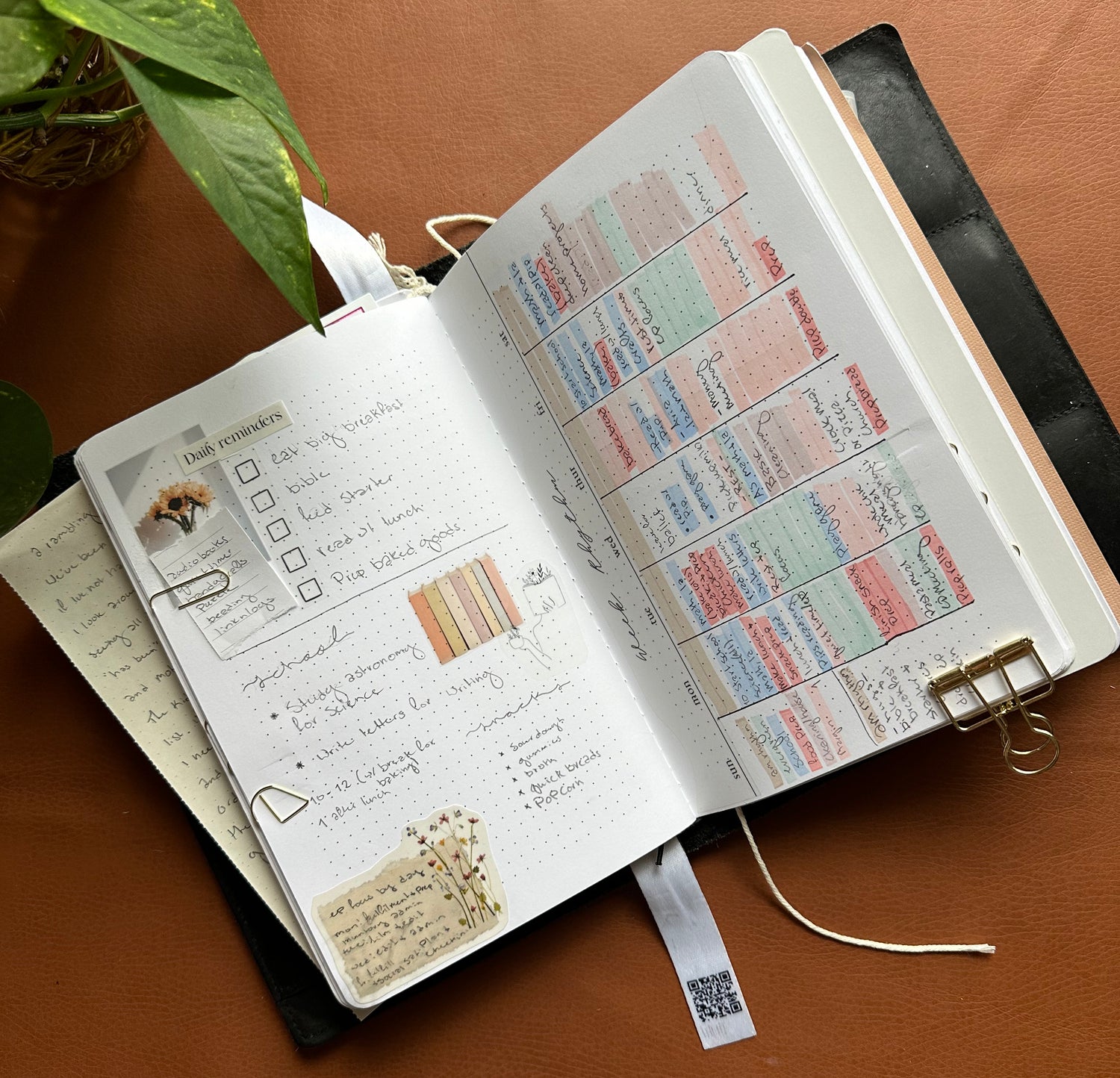
McCauley's Week Rhythms
Recently, I (McCauley) have been doing the hard work of shifting my rhythms. Seasons are changing, and I've felt scattered because of how much time I was allowing for overlap between focused time with my kids and time that needed to be set aside for business tasks.
I know that the best way for me to get business work done later in the day is to make sure I connect with my kids in the morning. Whether it's working together through school, doing a craft, or going outside, I know I have to tend to my children first to help them feel grounded. This also helps them know what they need to do for the rest of the day.
So when I started tweaking my week rhythms, I knew it was important to not allow overlap between my focused time with my kids, and business work.
Crafting My Week Rhythms
The first thing I did was to implement a morning check-in with the business to declutter my brain early in the day while Philip is still home. Once that's done and Philip leaves for work, I can move to focusing on the kids with a fresh brain.
Next, I looked at what needs to be prioritized for my week as a whole. What are the things that have to happen each week to keep things on track? When and where are my set appointments that other things have to fit around?

I wrote everything down in the week audit in my Annual, and the week spread in my Classic, and the daily time blocker in my Classic. This is not redundant busywork; the more I wrote things down, the better I remembered them as they became etched in my working memory. The more your write things down, the more you "train your brain" to care about your rhythms, and the less mental lifting you have to do each day.

After I made sure things were written down correctly, I created a key using simple symbols. Using these symbols in my week spread gives me the ability to know what's happening each day with just a glance!
Working Out Rhythms in the Day-to-Day
The truth is, life is still moving; what looks good on paper might not translate in day-to-day life. Building a rhythm isn't a "one and done" deal. There is continual work needing to be done for building a rhythm that helps your family thrive. It requires trying again tomorrow—and tomorrow, and tomorrow—and making notes at the end of each day about what worked and what didn't so you can reevaluate for the next week.
Your planner acts as a "hub for your brain" in all of this. All of the details necessary for rhythm building, children's needs, grocery lists, all things running in brain have a home in the planner. This means you spend less time stressing over perceived or real problems, and more time quickly solving them.
Maintain a Flexible Mindset
A key piece to this work of rhythm building is to maintain a flexible mindset. You can't script the future. No matter how much you try, what you have on paper won't be identical to what you live out in real life, no matter how hard you try.
That doesn't mean it's pointless to write everything down or to do the hard work of building a rhythm. It's a balancing act of keeping a flexible mindset while building a rhythm that's sustainable and supportive to the people in your family—you, your spouse, and your children, and anyone you support.

Once you have a rhythm, there will be a lot of days that go "to plan."As you build out the ideal for the day and put in the mental effort to tweak details, you'll be building your working memory around the most important things you have in your days. So you continue to take care of and prioritize the things you can't skimp on.
Then, even when a day doesn't go as planned, your working memory will know what needs to happen and help you get back on rhythm. You subconscious will know the priorities because of time you invested in writing it down, building out rhythms, tweaking, and pivoting.


Leave a comment